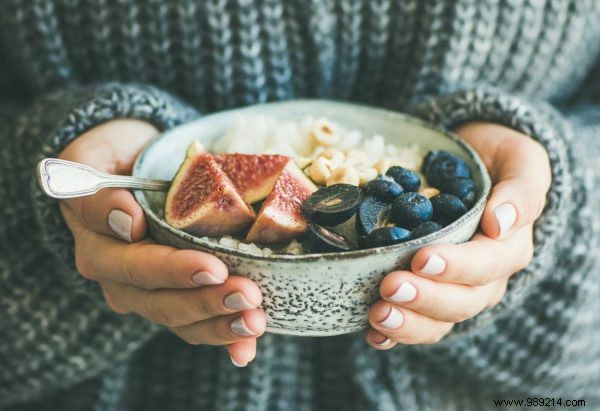
Warming foods provide energy and support your immune system. Exactly what you can use in this day and age. But with which foods do you do that exactly?
In Chinese dietetics they believe that food has a warming or, conversely, a cooling effect. In this leather, foods are classified according to their thermal effect (hot, warm, neutral, refreshing and cold). This does not only concern the real temperature of the food, but also the energetic temperature. A red pepper, for example, does not feel warm, but it does have a warming effect.
Read also: '10 things you recognize when you're cold'
Warming products (yang) move your organs, convert waste products and stoke your internal heater. Cooling products (yin) calm your organs and cool your body. The Chinese believe that if you eat a lot of cooling food in winter as a cold, you will get out of balance. Cooling foods would draw heat and energy from your body, increasing your risk of infections and viruses. By the way, warming food is not only good if you feel cold quickly, but also if you feel tired or down, have difficulty concentrating or have the flu.
Do you have to spend hours studying Chinese nutrition to learn everything about warming food? No, because you will probably notice that you feel like eating different foods in the winter than in the summer. A cold splash of dairy or a raw salad are just a little less attractive. So go for comforting stews, stews and soups, and steaming hot drinks. Below you can read what you can best go for these months as a cold:
Vegetables that can withstand frost are usually warming. Think of various types of cabbage, pumpkin, sweet potato, parsnip, onion and carrot. They grow more slowly than summer vegetables and the longer a vegetable takes to mature, the greater its warming effect. This also applies to organic vegetables:they have more time to ripen and absorb heat.
A lot of fruit is yin, so cooling. Nectarines, peaches, cherries, plums, dates, grapes, dried fruit and figs are warming. It is also possible to make fruit more yang in winter by heating it.
There are all kinds of herbs and spices that have a warming effect. For example, black pepper, cayenne, chili pepper, nutmeg, fennel seed, mustard seed, cloves, cumin, rosemary, marjoram, thyme, oregano, parsley, coriander, chives, dill, basil, curry, bay leaf, star anise, cinnamon, vanilla, ginger and garlic.
The warming category includes quinoa, buckwheat, millet, oats, amaranth, chestnuts, pistachios, sesame seeds, walnuts and pine nuts.
Many animal products are warming. Chicken, turkey, lamb, game and eggs, but also (oily) fish such as herring, anchovy, shrimp, salmon, lobster, mussels, tuna and sardines.
Skip your yogurt with muesli or bread with cheese. In Asian countries, a hot breakfast is the most normal thing in the world. To attempt? Start your day with soup. Make a large pan and eat it for several days. Here too the following applies:choose fresh, preferably organic ingredients. Is soup in the morning not your thing? A bowl of oatmeal with dried fruit (or other porridge) is also warming.
Such as hot cocoa, coffee, tea or golden milk. And how about a creamy pumpkin spice latte?